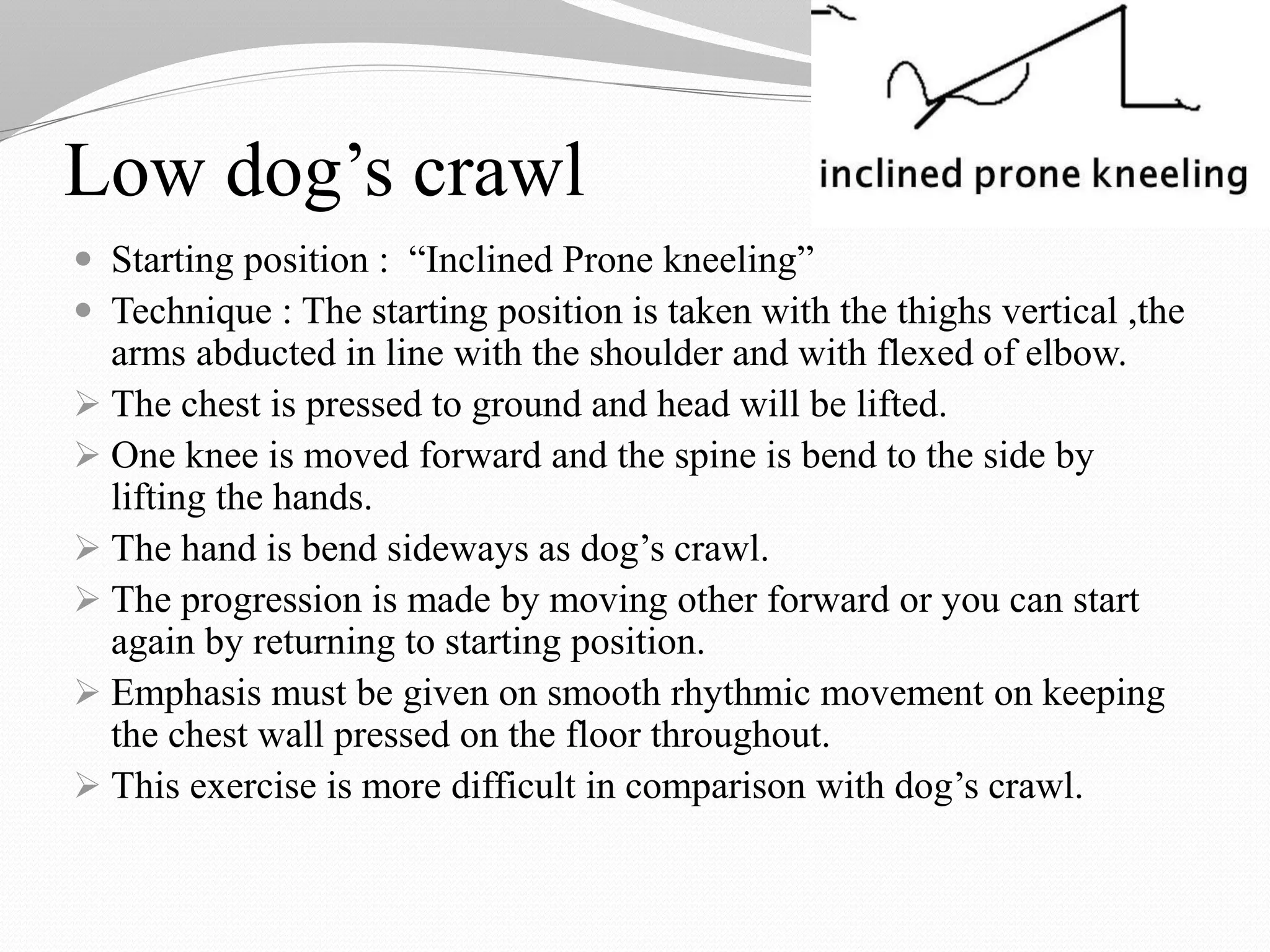This document discusses different types of crawling exercises used in physiotherapy. It describes five types of crawls - dog's crawl, low dog's crawl, arm stretch crawl, leg shift crawl, and low 'S' crawl. Each type is explained, including starting position and technique. Crawling exercises are used to improve coordination, endurance, spinal mobility, and control excessive mobility. They also help build reciprocal arm and leg movement like walking. Resistance can be added and different starting positions impact the effects. Crawling provides a safe way to move for those with poor balance.












